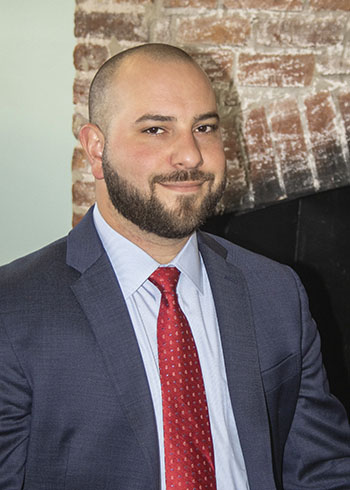As the country slowly emerges from COVID, we are confronting a seismic shift to recruitment
dynamics the likes of which have not been seen since the emergence of the gig economy. In an
effort to monitor productivity and encourage collaboration, most companies and government
agencies followed a traditional model that brought employees together into central hubs to
physically work side-by-side. Working from home was a concept that seemed more quirky than
transformative.
And then the pandemic struck. Within weeks, entire corporations and governmental entities
emptied, pivoting to fully remote operations. This state of affairs remained in place for months,
proving that the business of the day could indeed be completed by a geographically dispersed
workforce.
Over time, employees began to appreciate the benefits of remote employment: no traffic to
fight, no high gas or parking bills to pay, more flex to the standard business day, and less office
politics to cope with. People decided they were comfortable with the “new norm.” They
wanted to continue to work remotely. Once untethered from a physical workspace, employees
also discovered the joys of living wherever they wanted for however long they wanted. This has
a lot of appeal to a mobile, young, unattached generation.
But now that we are emerging from the era of strict lockdowns and social distancing,
government agencies in particular want to return to the traditional office model. They want
their people back onsite. A few agencies are willing to embrace the cost savings associated with
a remote workforce. Others are offering hybrid models with some opportunities for remote
work. But even these forward thinkers would prefer to have staff within an hour radius so they
can drop in for in-person meetings, training, and social gatherings.
The Consequences of this New Tension
This shift has had significant impact on government and, in turn, on the companies that support
them with contract labor or recruitment services. Uncle Sam used to be at the top of the food
chain in the DC Metro area when it came to highly skilled talent holding top-level clearances.
Now, people have been leaving government jobs in droves for the past 18 months. Agencies
now compete in a vastly expanded geography.
Large companies in Texas, Silicon Valley, and even abroad—who see the value of tapping into a
global labor market—are making head-first dives into this area’s elite and highly desirable labor
pool. Their pitch? They don’t care where people sit. They have the policies, protocols, and
processes in place to cope elegantly with a geographically dispersed workforce. Nor are they
particularly constrained by the compensation standards of local markets. Highly skilled talent
can make California high-tech wages regardless of whether they work in LA, DC, or Kansas City.
Compounding the challenge is the fluidity of the situation. If we learned nothing else from the
past 18 months, it’s that, as soon as you get a handle on the situation, it all changes
again—fundamentally and rapidly. The take-away for the federal marketplace is that the
agencies and companies that are agile—those that can pivot at a moment’s notice—those that
are willing to work harder, source more deeply, and be creative in approaching passive
candidates—those are the companies that will succeed in this new paradigm.
What started as an extraordinary reaction to a life-threatening virus and evolved into a beta
test of a temporary inconvenience has now morphed into what can only be viewed as a
permanent and fundamental change to the government’s traditional operational model and to
the way we need to recruit and retain the best of the best. It is the new reality of public service
and the work environment.
We welcome your comments and insights.
Blurb for the Marathon Home Page:
The New Post-COVID Challenges Facing the Federal Government
By Kevin Davis, Vice President & GM
As the country slowly emerges from COVID, we are confronting a seismic shift to recruitment
dynamics the likes of which have not been seen since the emergence of the gig economy.
This shift has had significant impact on government and, in turn, on the companies that support
them with contract labor or recruitment services.
Use same mechanism as past blogs to take readers to full blog on the blog page
LinkedIn Post:
As the country slowly emerges from COVID, we are confronting a seismic shift to recruitment
dynamics the likes of which have not been seen since the emergence of the gig economy.
Agencies now compete in a vastly expanded geography. Large companies in Texas, Silicon
Valley, and even abroad don’t care where people sit. They can cope with a geographically
dispersed workforce. Nor are they particularly constrained by the compensation standards of
local markets. The companies that are willing to work harder, source more deeply, and be
creative in approaching candidates—those are the companies that will succeed in this new
paradigm. To learn more, read The New Post-COVID Challenges Facing the Federal Government
(linked) from our own General Manager, Kevin Davis.
Facebook Post:
As the country slowly emerges from COVID, we are confronting a seismic shift to recruitment
dynamics the likes of which have not been seen since the emergence of the gig economy.
COVID taught us that the business of the day could indeed be completed by a geographically
dispersed workforce. Once COVID subsided, employees wanted to continue to work remotely.
But, government agencies want their people back onsite. People have been leaving government
jobs in droves for the past 18 months, and agencies now compete in a vastly expanded
geography for the best talent. It is the new reality of public service and the work environment.
Read More from Kevin Davis, VP & GM of Marathon TS


0 Comments